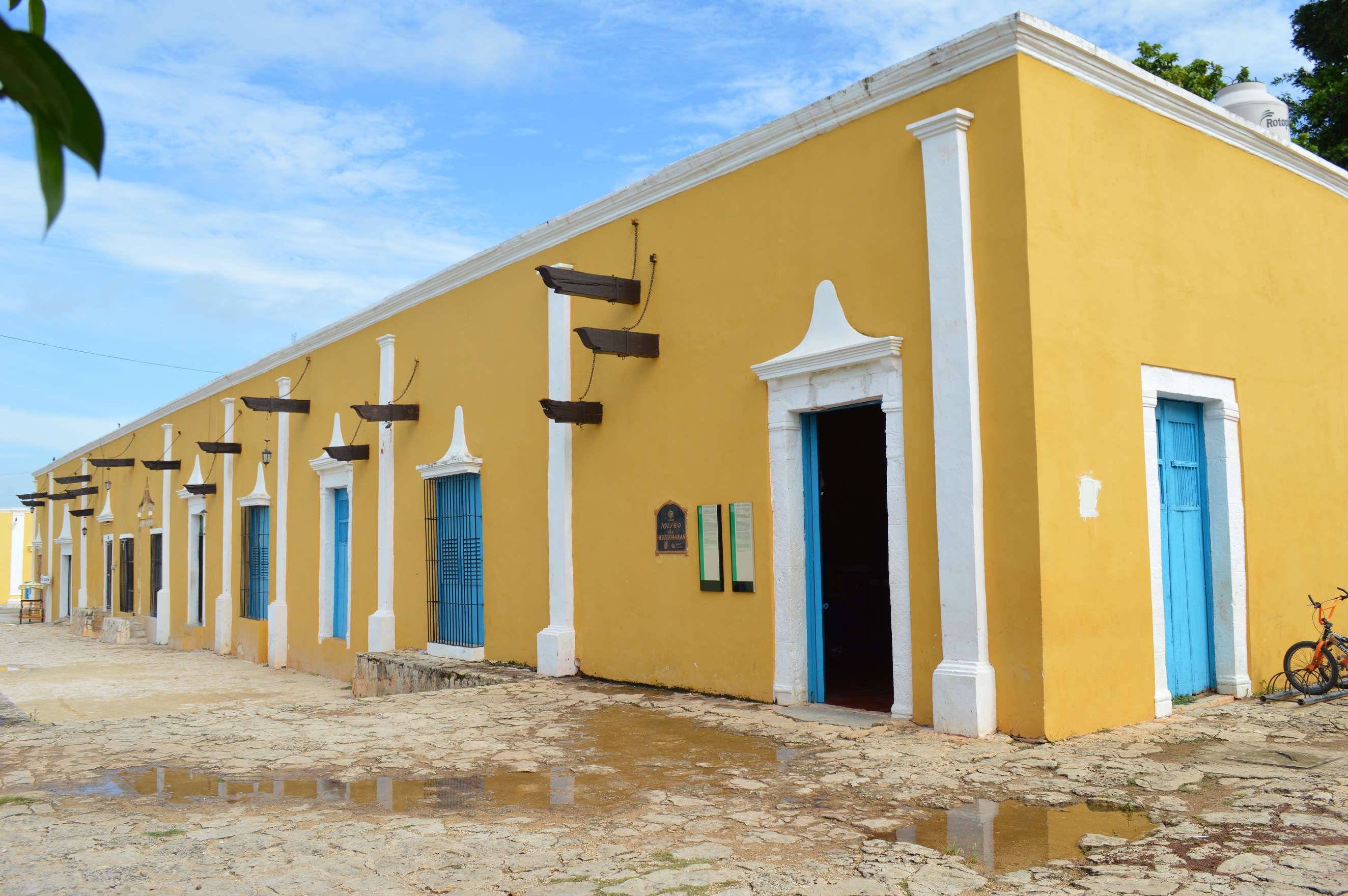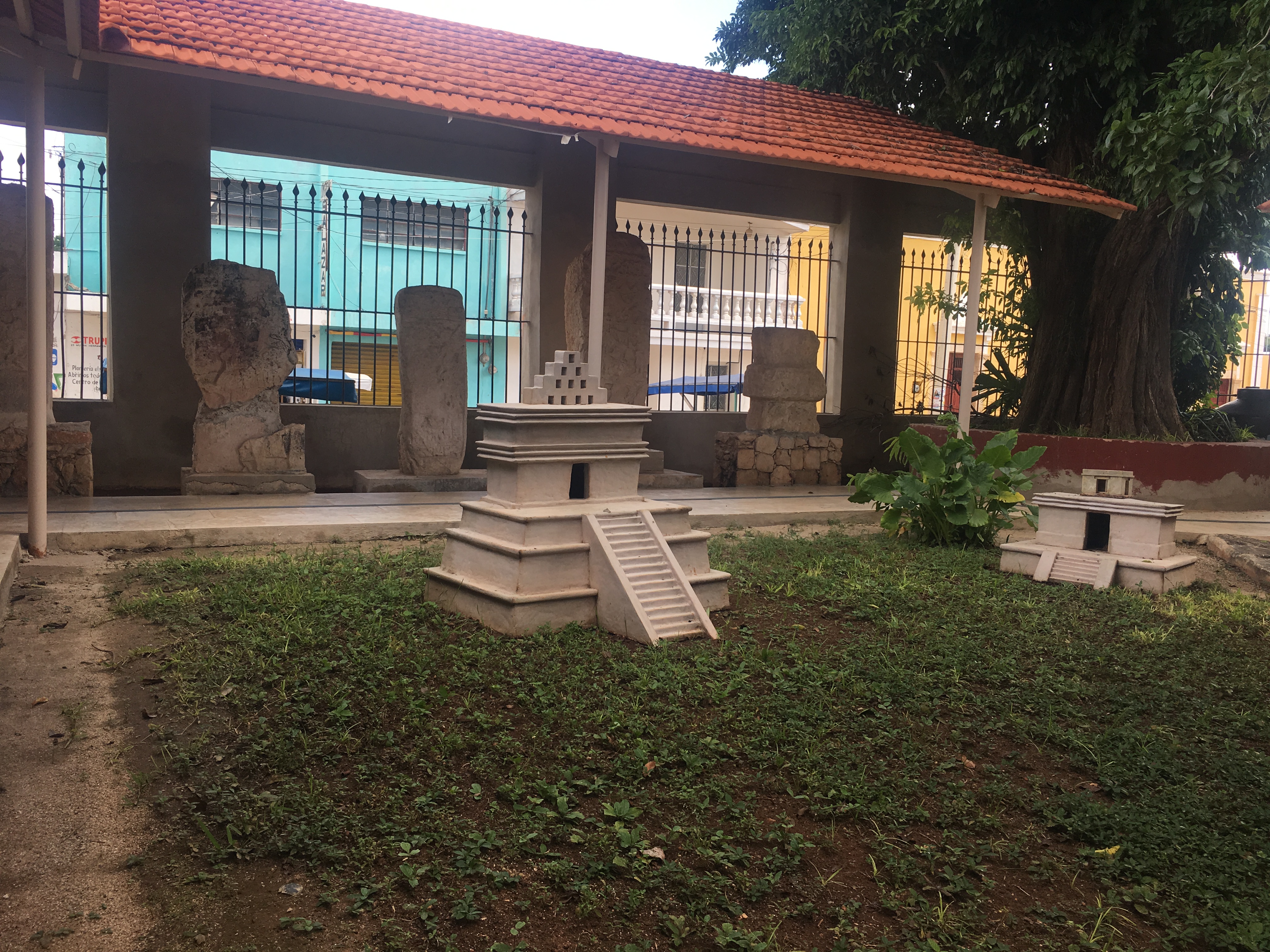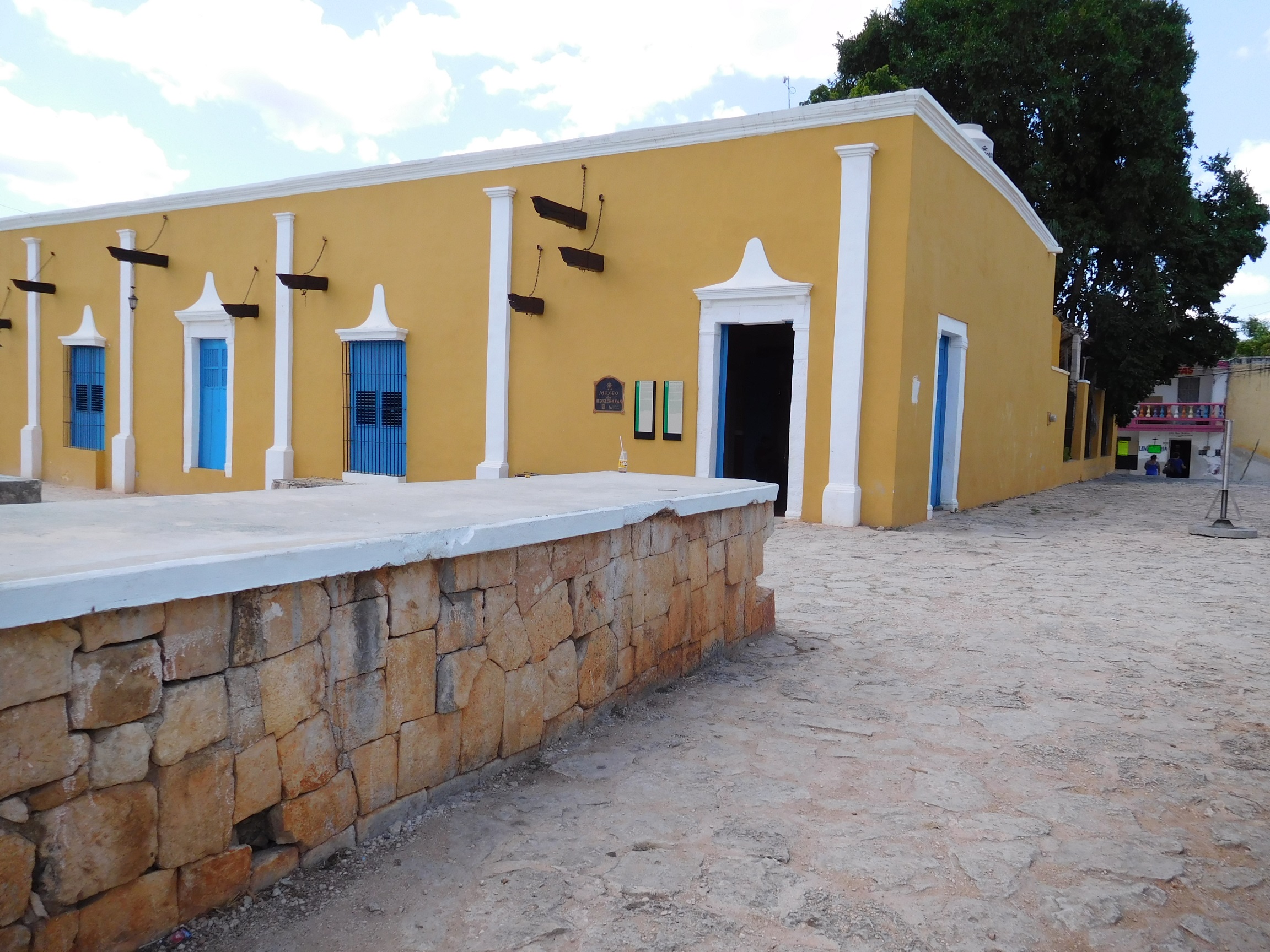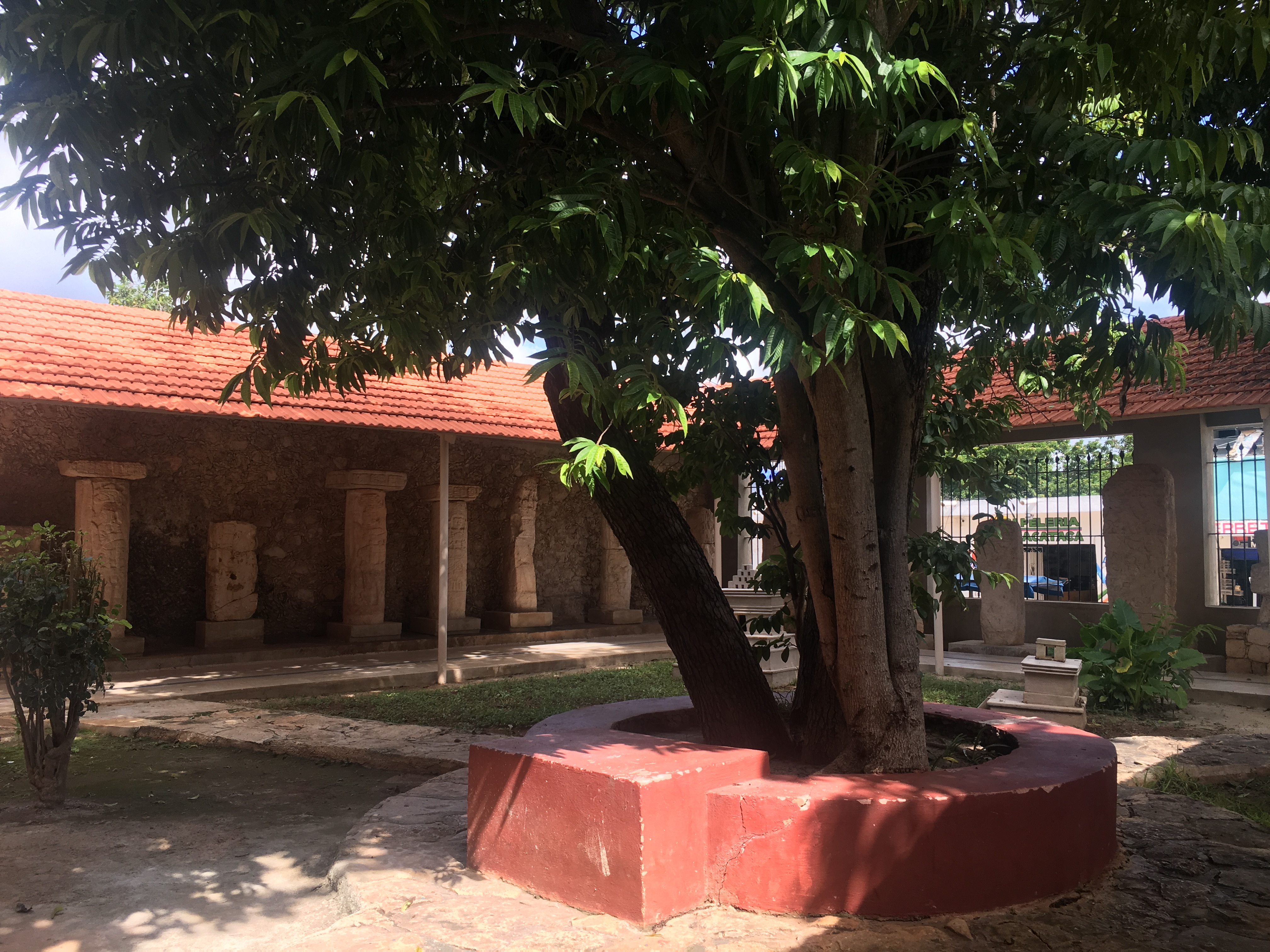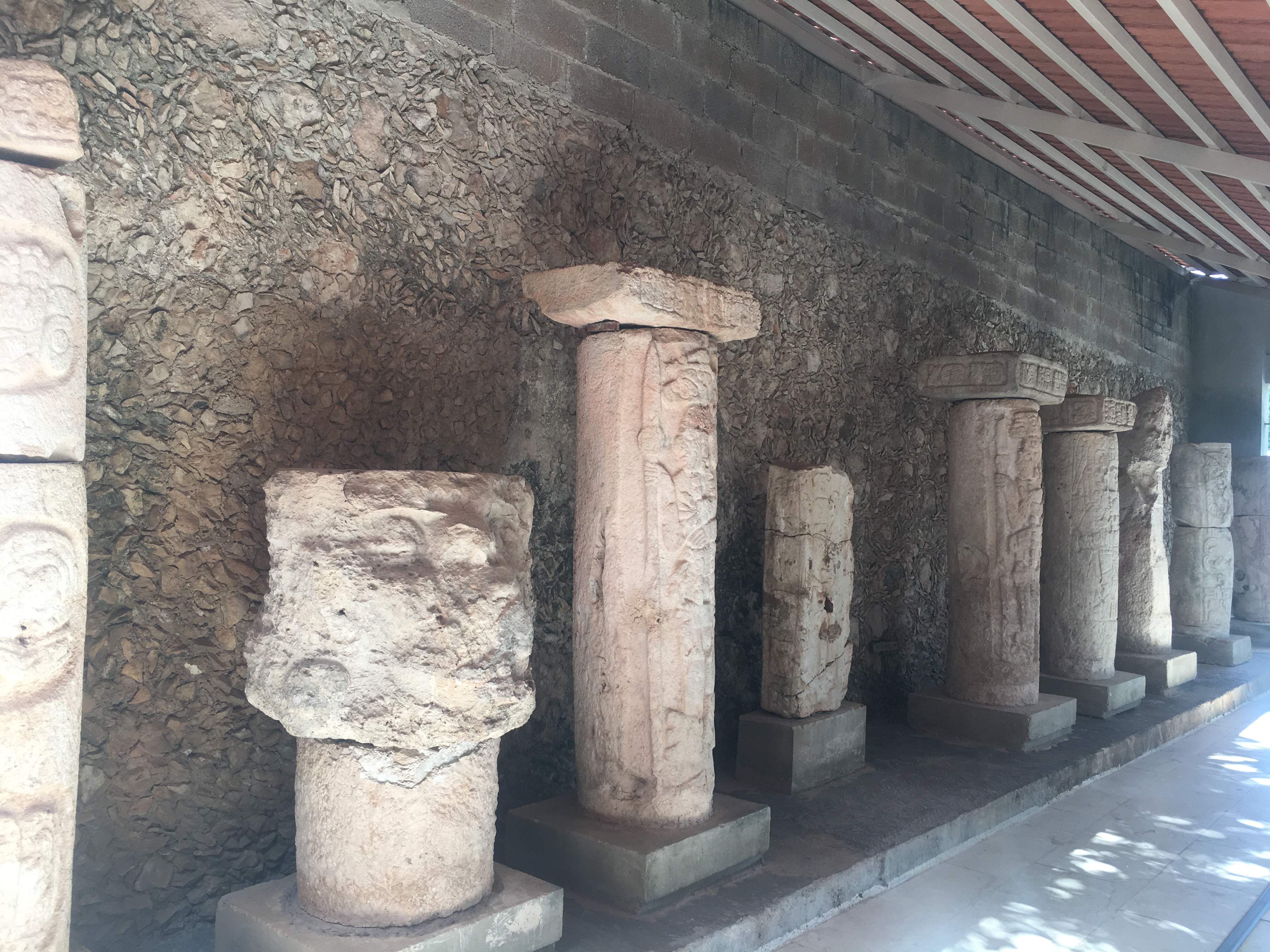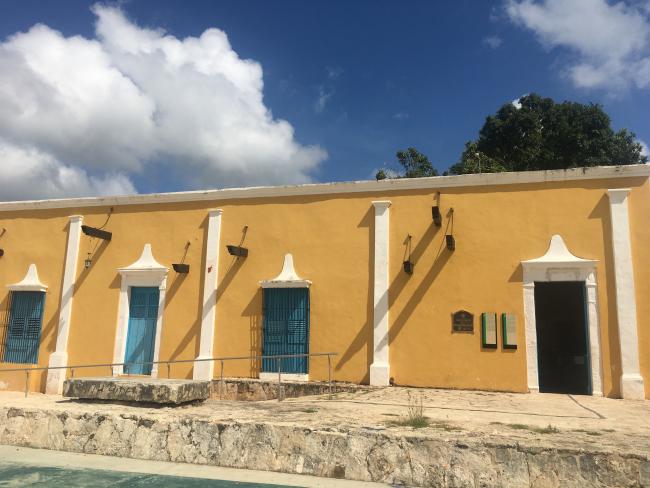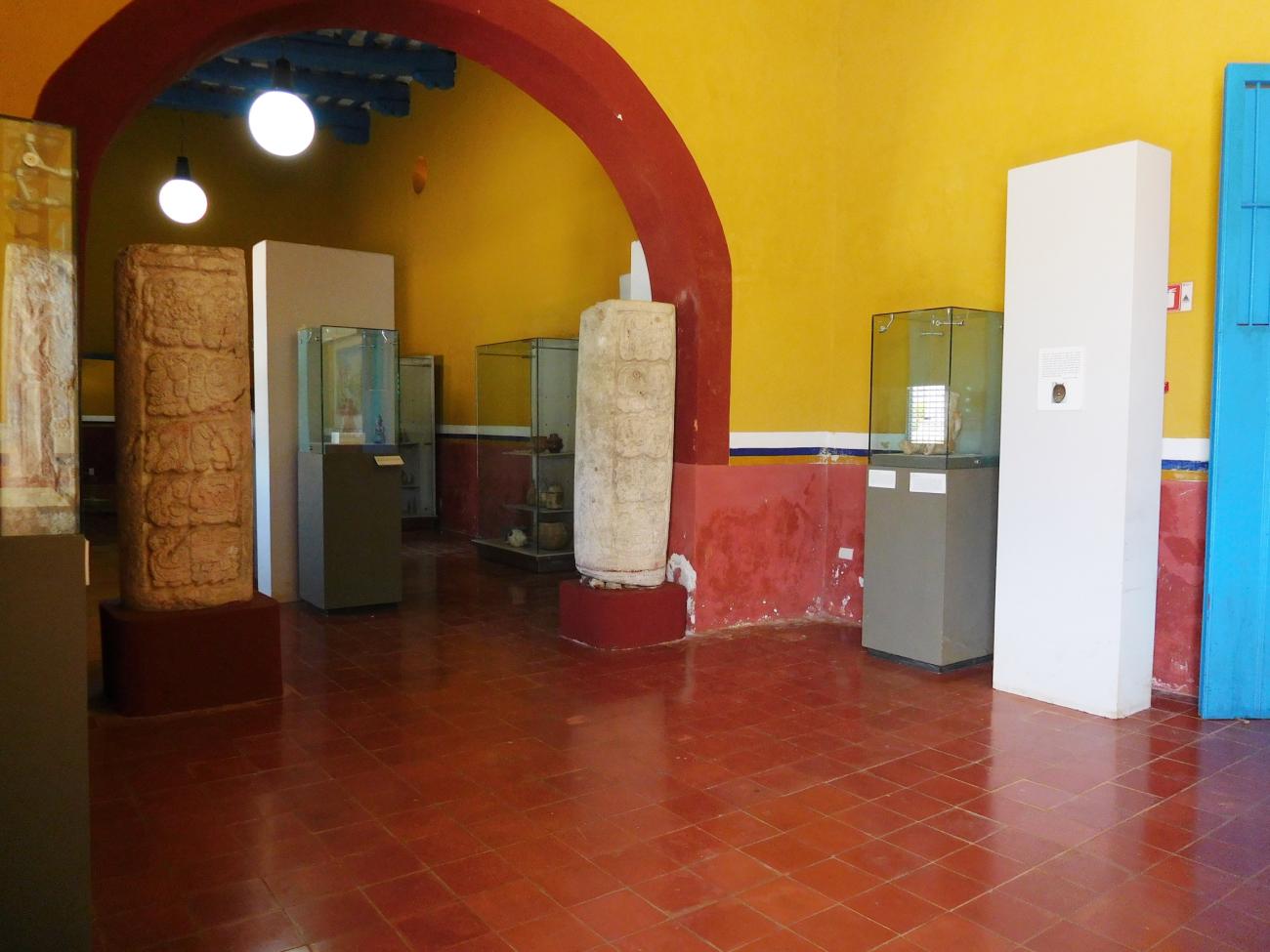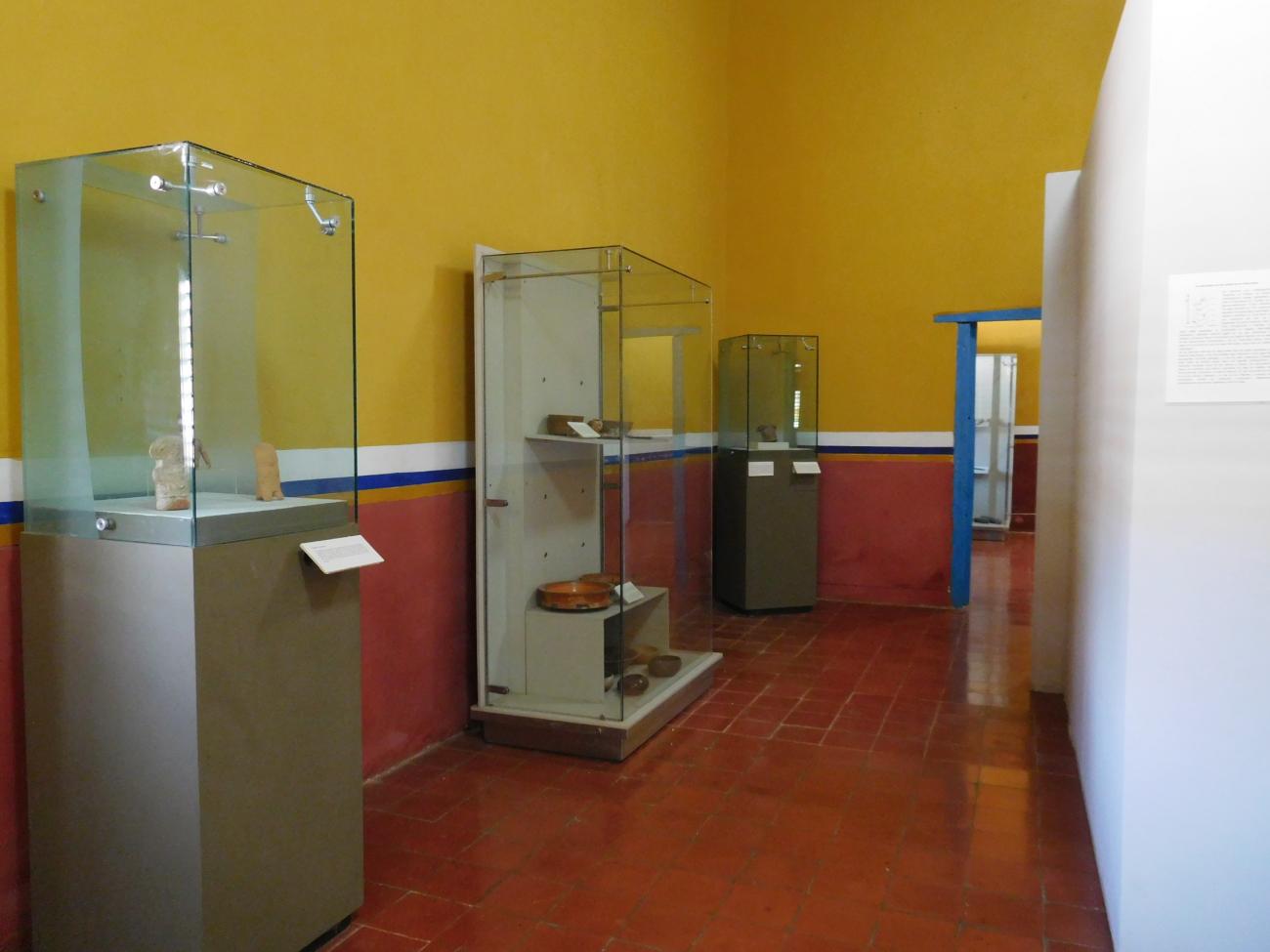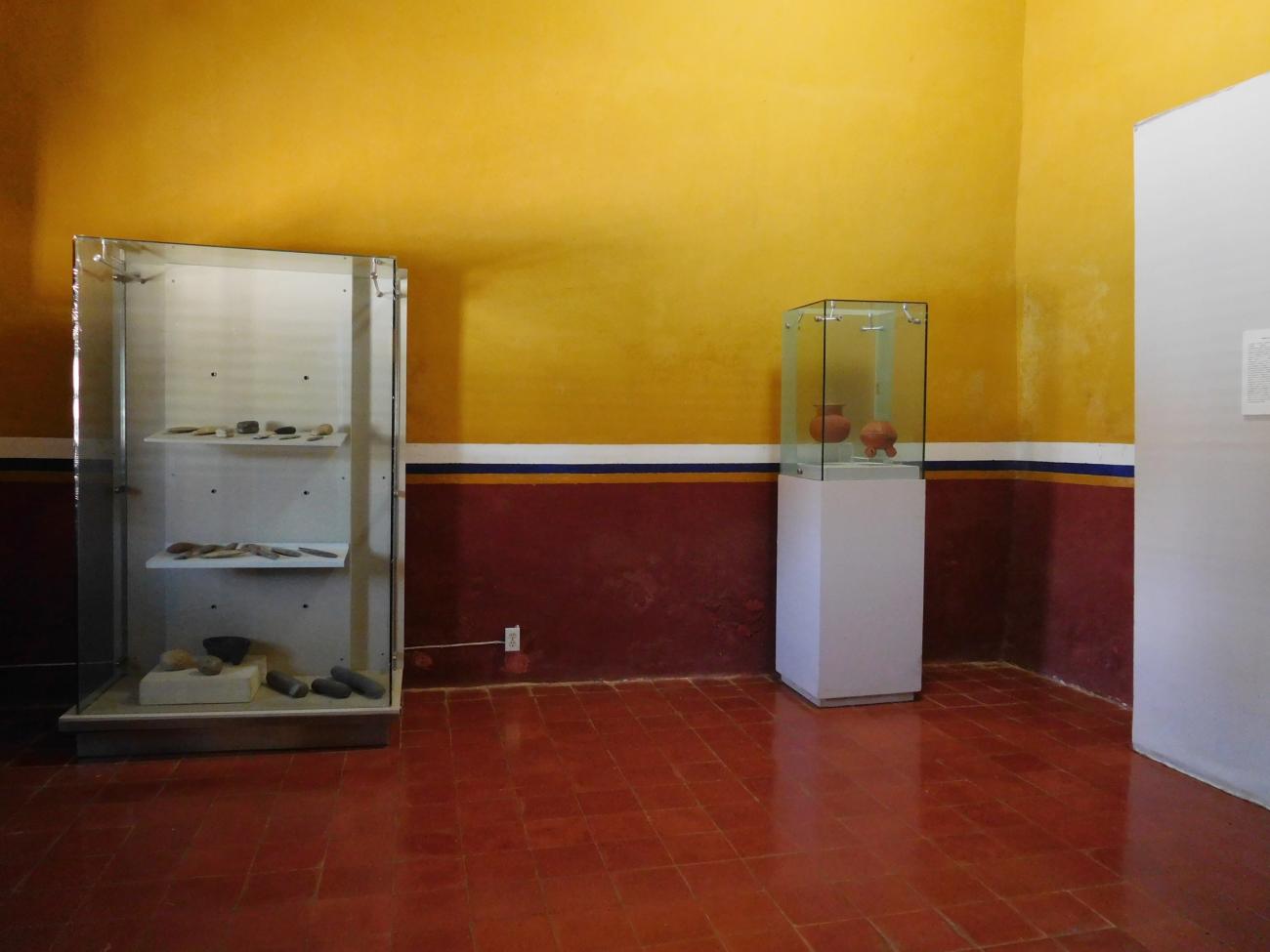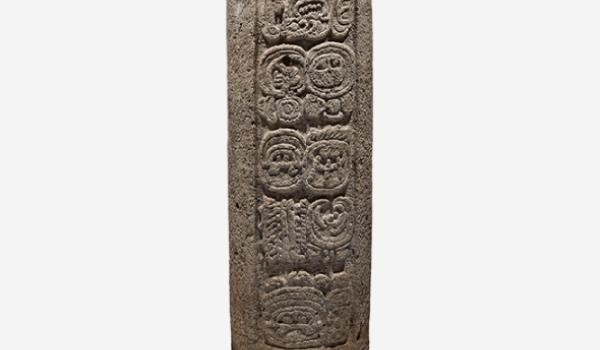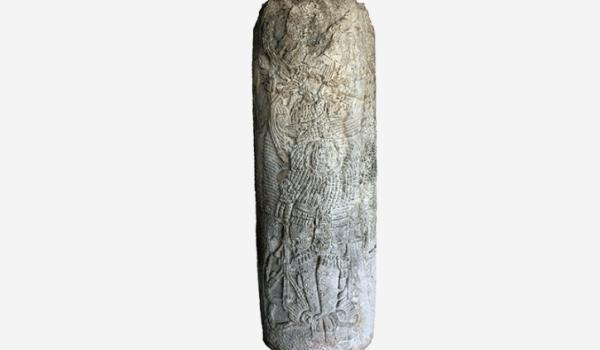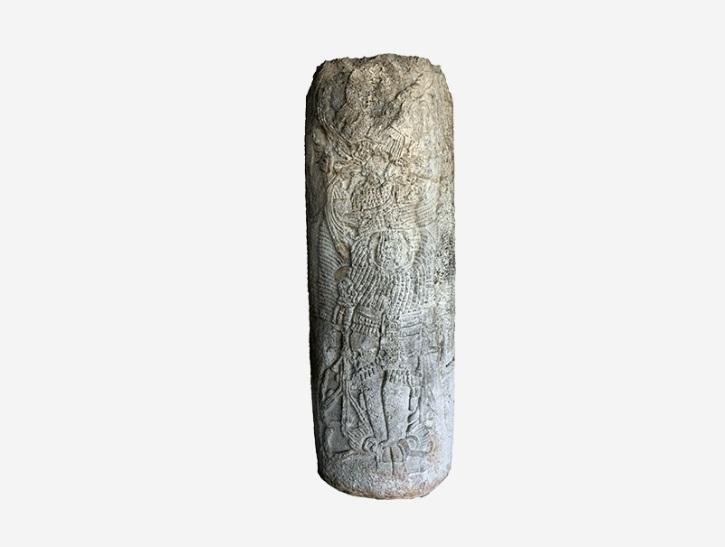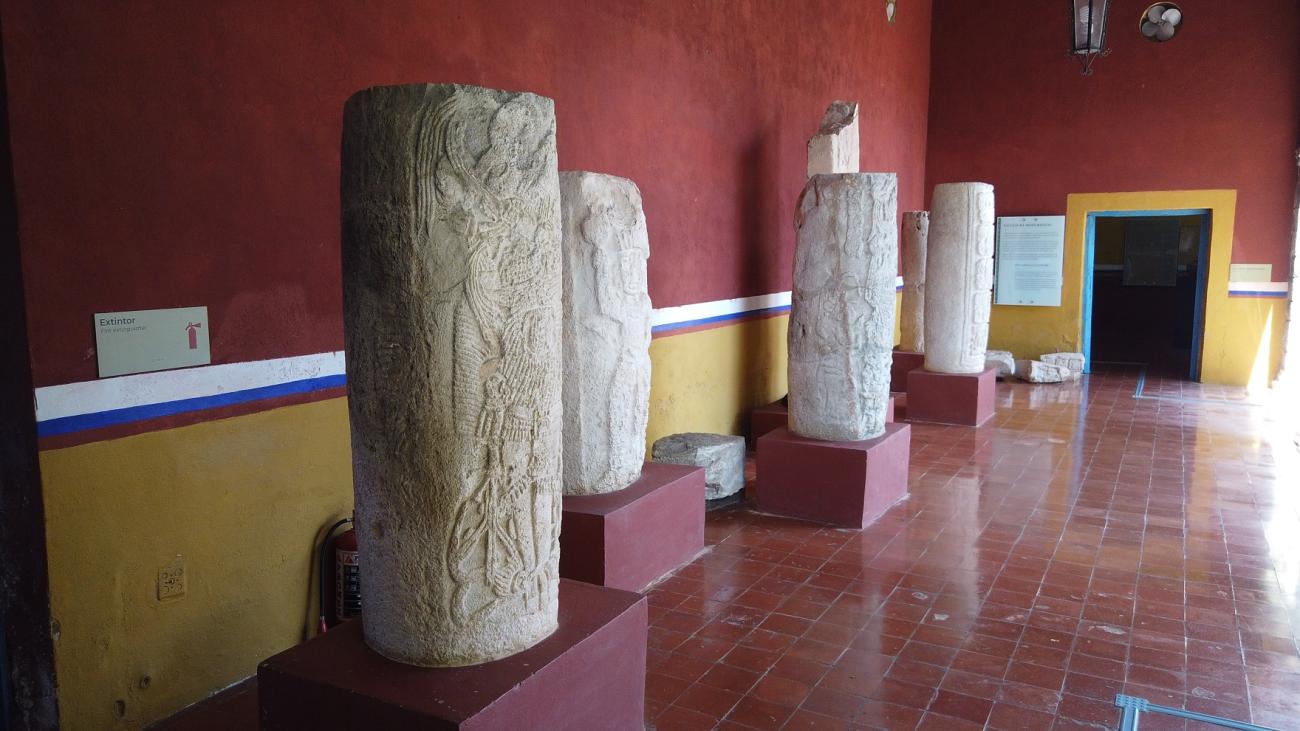The Royal Road Museum, as it is also known, is housed in an eighteenth-century mansion of the viceregal period, in the main plaza of the Municipality of Hecelchakan. According to the official history the town was founded in the sixteenth century. Hecelchakan is located in the savanna; it is an indigenous name meaning “resting place in the savanna.”
A version of its history is told by the 1547 Tax Register and various documents of the period, which record that Hecelchakan was part of a larger “encomienda” controlled by Pedro Martín de Bonilla located 25 miles to the north in the towns of Cenote and Mopilá. In 1579 the Franciscan order built a monastery called Jecchakan in this “independent town.”
The Royal Road of Hecelchakan Archeological Museum was located in the center of town on the north side of the same plaza as the monastery. It was opened to the public under the administration of Colonel José Ortiz Ávila, who gave the building on free loan to the National Institute of Anthropology and History (INAH), where it remains today. The permanent collection established at the time includes an interesting selection of archeological finds from the settlements in the north of the state such as Xcalumkin, Xcombek, Itzimte, Xculoc and other sites from the Puuc region of western Campeche. However the majority of items in the collection come from the island of Hina or Jaina.
Today the community hosting the museum is home to 10,000 inhabitants who retain a deep-rooted intangible Mayan cultural tradition. It is located nearly 40 miles north of Campeche on the west side of Federal Highway 180, which runs northwards linking it to the Municipality of Calkini.






